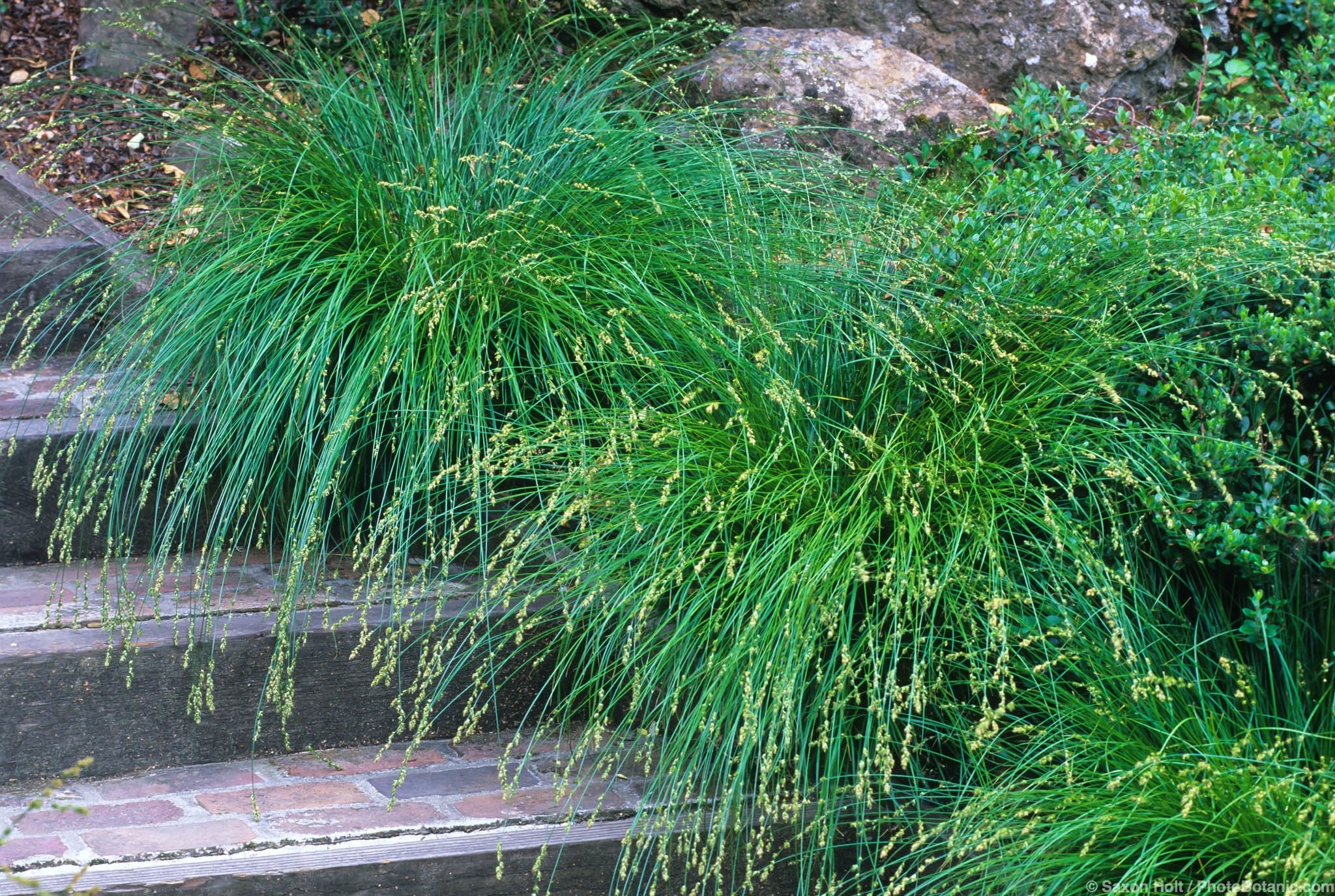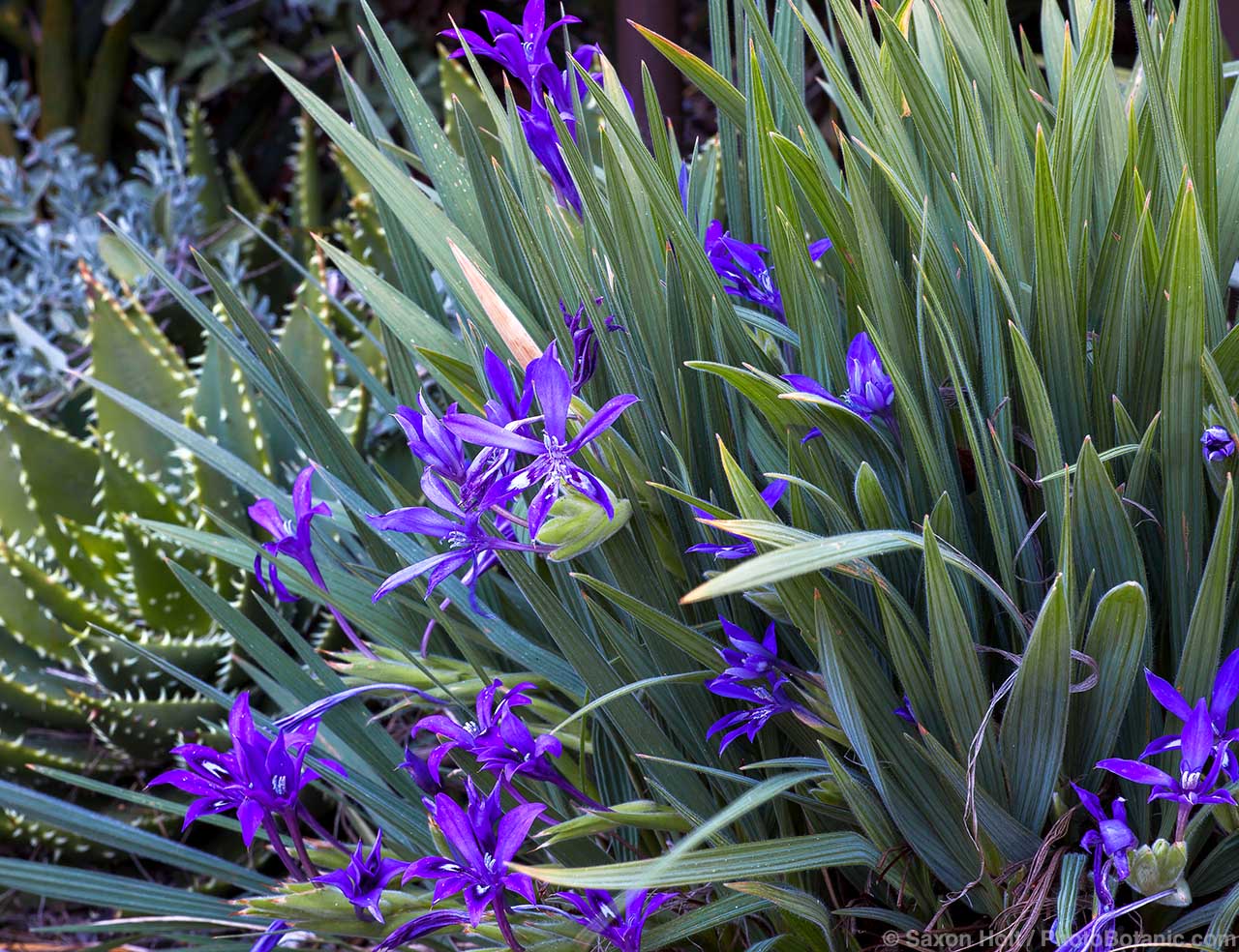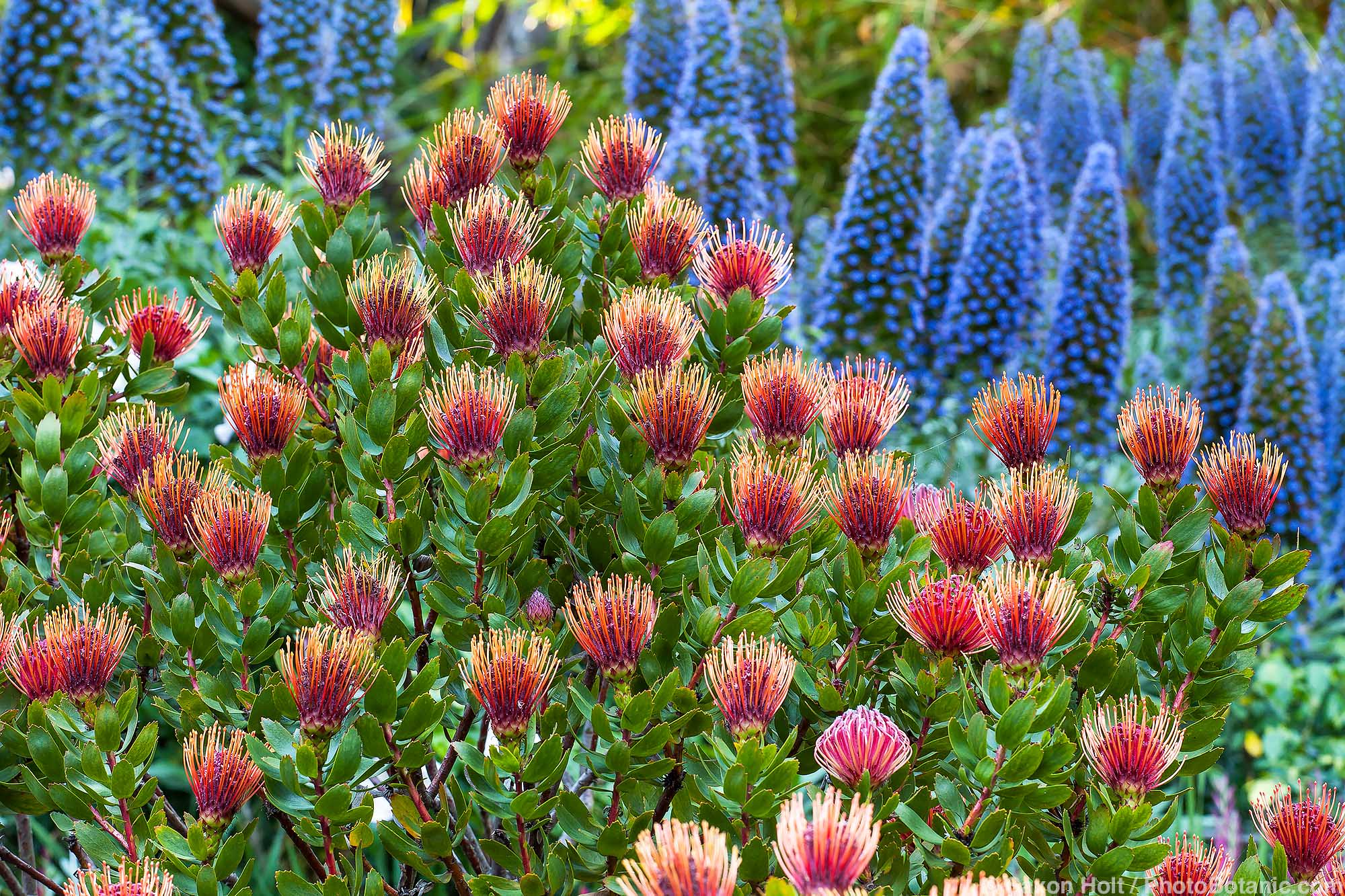What’s in a Name ?

Share This!
It is oddly disconcerting when a singular plant, long believed to be a California native, turns out to hail from some other part of the world.
One such plant is Berkeley sedge. This bright green grasslike plant was formerly known and grown as Carex tumulicola, a sedge native to California and other parts of the Pacific Coast.
Some years ago Berkeley sedge was discovered to be a form of Carex divulsa, which is native to Europe and western Asia.
Another imposter, Festuca ‘Siskiyou Blue’, was once thought to be an exceptionally fine selection of our native fescue, Festuca idahoensis. Some years ago it was discovered to be a hybrid of this plant and the European blue fescue, Festuca glauca.

Siskiyou Blue fescue was first discovered in the Siskiyou section of the California native garden at Berkeley Botanical Garden.
Both of these plants are still commonly found in the natives section of local nurseries, and both are still offered and described on some websites as California natives.
Regardless of their current names or origins, both are excellent plants for summer-dry climates and both blend well with native plants.
Berkeley sedge is a rounded, mounding, evergreen plant with narrow green leaves, growing to up to 2 feet tall and wide. Along the coast it takes full sun to part shade. Inland it prefers light shade or afternoon shade. It can take full shade. Quite tolerant of dryness once established, it is at its best with some summer irrigation.
This sedge does seed about some, which is desirable if you’re filling in a lawnlike space or making a meadow garden. If you don’t want seedlings or just want to neaten and renew the plant, cut it back in winter or early spring.
Berkeley sedge is often touted as a lawn alternative. In a mass planting, especially if cut with a high set on the mower, it does give a green lawn effect. But make no mistake, though it accepts some foot traffic, you can’t play softball on it.
Festuca ‘Siskiyou Blue’ is a fine-textured, slate blue, softly cascading bunchgrass, a foot or more tall and 18 inches to 2 feet wide. Flowers on upright spikelike stems rise above the leaves in summer, followed by wheat-colored seedheads.
This delicate-looking smallish grass makes a great foil for larger or bolder gray-leaved plants such as Cleveland sage or lamb’s ears or purple-leaved plants such as some sedums. Perennials with pink, purple, yellow, red, or orange flowers are outstanding in its company.
Near the coast ‘Siskiyou Blue’ takes full sun to light shade and occasional summer water. In interior gardens it will need afternoon shade or more frequent irrigation to keep from browning out.
Share This!
Related Articles
By: Nora Harlow
By: Nora Harlow
By: Nora Harlow





